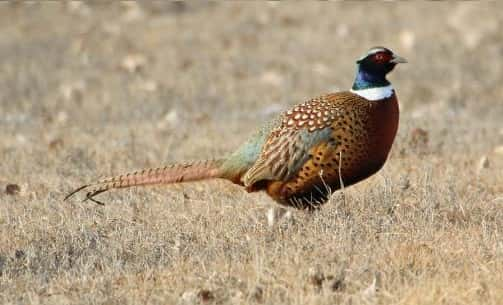
BISMARCK, N.D. (G&F) – North Dakota’s spring pheasant population index is up slightly from the same time last year, according to the state Game and Fish Department’s 2019 spring crowing count survey.
R.J. Gross, upland game management biologist, said the number of roosters heard crowing this spring was up about 6 percent statewide. The primary regions holding pheasants ranged from up 14 percent in the southeast and up 17 percent in the northwest, to down 8 percent in the southwest. The count in the northeast, which is not a primary region for pheasants, was up 33 percent from last year.
“We are still seeing the effects of the drought of 2017 that resulted in low chick survival,” Gross said. “Typically, a spring pheasant population is composed primarily of yearling roosters with nearly as many 2-year-olds, and currently we have very few 2-year-old roosters.”
Gross said hens should be in good physical shape for nesting season, and despite a cool spring, precipitation has helped supplement the residual grasses to produce ample nesting vegetation.
While the spring number is an indicator, Gross said it does not predict what the fall population will look like. Brood surveys, which begin in late July and are completed by September, provide a much better estimate of summer pheasant production and what hunters might expect for a fall pheasant population. “Barring significant storms or prolonged cold temperatures in June and July, we could be set for a good hatch,” Gross said.
Pheasant crowing counts are conducted each spring throughout North Dakota. Observers drive specified 20-mile routes, stopping at predetermined intervals, and counting the number of pheasant roosters heard crowing over a two-minute period during the stop.
The number of pheasant crows heard is compared to previous years’ data, providing a trend summary.
